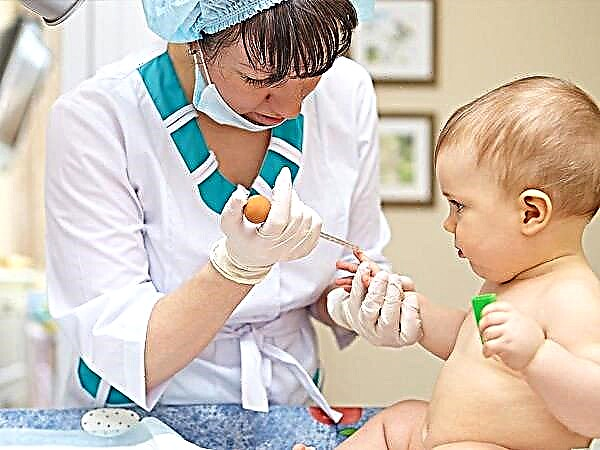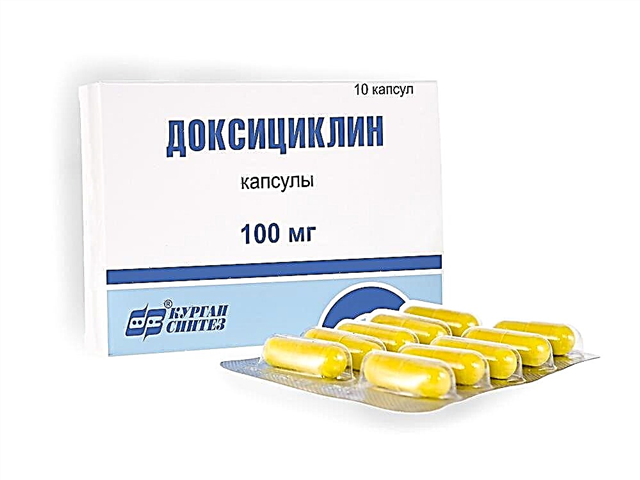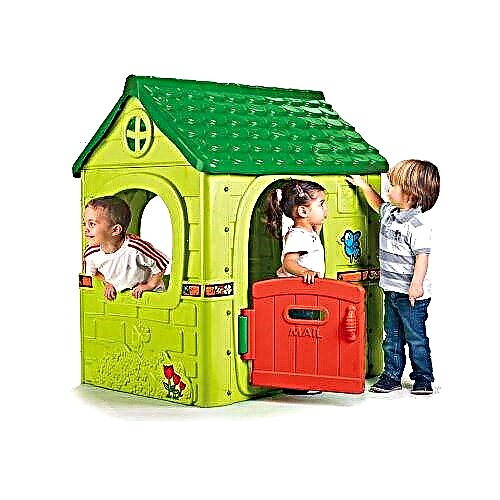
Constipation is one of the most common problems and often occurs in childhood. This is usually due to insufficient maturity of the digestive system in babies, infection with parasites, eating disorders and many other factors. To normalize the process of emptying and increase intestinal motility, the doctor may prescribe laxatives, for example, Forlax.
This medication is called safe and effective, which makes it possible to use it in young children. However, before giving this medicine to a baby, it is worth learning more about its mechanism of action, contraindications and dosages allowed for children.

Release form
Forlax is a French drug that comes in only one dosage form. It is a powder packed in laminated paper bags of 4 grams or 10 grams each. The medicine with less powder is called Forlax for children, which is noted on its packaging.
The powder itself is almost white in color and dissolves easily in water, forming a translucent white liquid. The drug has a smell of orange and grapefruit, and the taste of the diluted product is sweet. The children's version of Forlax is sold in packs of 20 sachets, and one pack of the product for adults can contain both 20 and 10 portioned sachets.


Composition
The active substance of the drug, due to which Forlax affects the digestive system, is called macrogol 4000 or ethylene glycol. Its dosage corresponds to the weight of the powder in the sachet, that is, from one sachet you can get either 4 or 10 grams of macrogol.
It is the weight of such an ingredient that distinguishes children's Forlax from an adult. The auxiliary components of both versions of the drug are identical. These include sodium saccharinate added to the powder for a sweet taste, as well as orange grapefruit flavor that contains orange juice, sorbitol, grapefruit oil, and other compounds.


How does it work?
By its mechanism of action "Forlax" belongs to osmotic laxatives, because macrogol has a polymer structure and a significant molecular weight. This allows such a substance to absorb water and retain it through hydrogen bonds.
After taking the medicine through the mouth, it passes through the stomach and enters the intestines, where it attracts water and increases in volume, which leads to a decrease in density and an increase in the volume of feces. As a result, the more voluminous contents of the intestine begin to come into contact with its walls and act on the nerve receptors. It is because of this that peristalsis intensifies and bowel emptying occurs.
The effect of the use of "Forlax" occurs after 24-48 hours - in most cases, the child empties the intestines the next day.
The active ingredient of the powder is not absorbed and is not transformed in any way in the human body, but leaves the body along with the feces. As the stool becomes more liquid and filled with water, emptying itself is gentle.

Indications
The main indication for the use of "Forlax" in childhood is constipation. In this case, the medication only eliminates such an uncomfortable symptom, but does not affect the cause of its appearance. For example, Forlax is effective for constipation caused by dietary changes. These include new complementary foods, the transition from breastfeeding to milk formula, the lack of vegetables, vegetable oil or dairy products in the child's menu.
The drug helps to empty the intestines in case of constipation caused by insufficient fluid intake or rapid loss of fluid, for example, in hot weather or when the body temperature rises.
Reception of "Forlax" is also recommended in the absence of stool due to food allergies, helminthiasis or other functional problems.

It is often prescribed for psychological constipation, when a child is holding back (for example, because of an unusual place or fear of pain), and then cannot normally go to the toilet, as well as when a disorder called kalomazanie appears. The powder can also be used for constipation caused by taking any medications, if you cannot cancel such remedies.
Sometimes Forlax is used after surgery as a remedy that normalizes stool and prevents constipation in the postoperative period. This medication is also in demand when preparing a patient for various examinations, the results of which can be affected by the fullness of the intestine (ultrasound, endoscopy). In such cases, Forlax is used before the procedure in order to gently cleanse the intestines and obtain reliable data.

At what age is it allowed?
Forlax sachets containing 4 grams of macrogol 4000 are intended for patients over six months old and can be used up to 8 years of age. However, you should not give this medicine to a small child without a doctor's prescription. The drug for adults, a portion of which includes 10 g of the active ingredient, is prescribed for children over 8 years old.
Contraindications
Although the use of "Forlax" is allowed in childhood, but the treatment with such a remedy also has its limitations:
- it should not be used in patients with inflammatory bowel disease such as ulcerative colitis;
- the drug is contraindicated in case of intestinal obstruction (both partial and complete) or if this pathology is suspected;
- it is not used for such a serious condition as toxic megacolon;
- you can not give "Forlax" and with symptomatic intestinal stenosis;

- the medication should not be used in children with sudden abdominal pain, the cause of which has not yet been identified (before giving the diluted powder to the child, any organic lesions of the gastrointestinal tract should be excluded);
- the medicine is prohibited in case of intestinal perforation or at the risk of this complication;
- Forlax is not used if the patient is hypersensitive to any of its ingredients;
- since the composition of the powder includes sorbitol, it is not used in children with fructose intolerance.

As for patients with diabetes mellitus, they can be given the medicine without fear.
Side effects
During treatment with Forlax, various negative reactions of the digestive tract may appear. Many children develop abdominal pain, but they are not pronounced and soon disappear. Also, the medication can provoke diarrhea and associated skin irritation around the anus. Some children complain of nausea or bloating after taking the drug. In isolated cases, Forlax causes an intolerance reaction in the form of edema, hives or skin rashes.
Unlike some other laxatives, "Forlax" does not provoke addiction when defecation occurs only after taking the drug. This makes it possible to use the powder in children who have become a chronic problem with constipation. Even if you use the medicine for several months, its withdrawal will not worsen bowel function.

Instructions for use
To give Forlax to a child, you must first dissolve the amount of sachets prescribed by your doctor in water. This should be done just before taking. To dilute 4 grams of powder, it is recommended to take about 50 ml of liquid, and to dissolve the contents of one sachet with 10 g of medicine, a 250 ml glass of water is required.
Children's Forlax is prescribed according to the following scheme:
- A child 6-12 months old can only be given 1 sachet per day. Usually it is recommended to drink the liquid prepared from it in the morning - 1-1.5 hours before breakfast.
- If a small patient is from one to four years old, the doctor also often prescribes the intake of one 4 g sachet in the morning. However, in some cases, you have to drink the medication additionally, then the child is given another packet in the evening.
- If the child is 4 to 8 years old, the daily dosage will be 2 to 4 sachets of 4 grams. It is usually divided into two doses - part of the drug is given in the morning, and the remaining dose is taken in the evening.


Patients over eight years of age are prescribed Forlax for adults. This medicine is often given only once (in the morning) in a dose of 1 sachet. In some cases, the doctor prescribes an additional intake of another packet in the evening.
How long to take the drug is determined by the doctor, because for this it is important to take into account the reaction of the child's body to the laxative and the cause of constipation. However, it is noted in the powder annotation that you should not give Forlax for more than three months.
To enhance the effect, sufficient physical activity and nutritional correction is recommended - the child must definitely consume plant foods that contain fiber. Such measures have a positive effect on the motility of the gastrointestinal tract and help both quickly get rid of constipation and prevent their development.
Overdose
If a child inadvertently took too much medication, it can cause diarrhea, which disappears soon after the cancellation of Forlax. However, in some patients, diarrhea can be quite intense, which leads to an imbalance of electrolytes and fluid. In this case, it is important to ensure the restoration of lost minerals and water with the help of pharmaceutical solutions or plentiful drinking.

Interaction with other drugs
If a child is taking Forlax, it should be borne in mind that any drugs used together with such a laxative will be less absorbed. For this reason, if you need to take other medications, a break of at least 2 hours is required.
Terms of sale
Both Forlax for children and the drug for adults are non-prescription drugs. A package of 20 sachets of 4 g each costs about 270-280 rubles, and the price of 10 Forlax sachets for adults is about 150 rubles.
Storage conditions
The bags should be kept out of the reach of children. The manufacturer's recommended storage temperature is not higher than +30 degrees Celsius. The shelf life of "Forlax" in any dosage is 3 years.

Reviews
More than 80% of reviews about the use of "Forlax" in children are positive. They describe the medicine as a mild and effective remedy that quickly helped to eliminate constipation and improve the condition of the child. The taste of the medicine does not cause protest in most children, and the portioned packaging is called by moms quite convenient to use.
The advantages of the remedy include the absence of a negative effect on the intestinal walls, the action exclusively in the intestinal lumen, the possibility of using it from six months and with diabetes mellitus. As for the disadvantages, in some patients the powder provoked side symptoms, and the price of the medicine is sometimes called high.

Analogs
Other means, the action of which is provided by the same active ingredient, can replace Forlax. These include the drugs "Forteza Rompharm", "Lavacol" and "Fortrans", however, due to the higher dosage of macrogol, such drugs have age restrictions - they are prescribed, respectively, to patients over 12, 15 or 18 years old. If a laxative is needed for young children, your doctor may prescribe one of these drugs:
- "Glycelax". This medication is used in babies older than 3 months for reflex stimulation of the intestinal motor function. It is produced in the form of rectal suppositories containing glycerol. Children are prescribed suppositories of 0.75 g of glycerin.

- Mikrolax... This remedy is a microclyster containing a combination of three active compounds - sorbitol, sodium lauryl sulfoacetate and sodium citrate. They draw water into the intestines and thereby liquefy the food bolus, making it easier to empty. The drug is called safe for children, so the doctor can prescribe it even to newborn babies.
- "Duphalac". The action of such a syrup is provided by lactulose, which, like macrogol, has a hyperosmotic effect. In addition to increasing the volume of intestinal contents and activating peristalsis, Duphalac also has a positive effect on normal microflora. In children, it is allowed to use it from birth. The analogs of such a remedy are the drugs Portalak, Normaze and Goodluck.


- "Guttalax". Such a remedy acts on the intestines due to the presence of sodium picosulfate in its composition. This ingredient stimulates natural emptying. The medication is released in two forms - drops that can be given to babies over 2 years old (having previously agreed on this use with a pediatrician) and pills prescribed to patients over 4 years old. Instead, drugs can be used and its analogues, for example, "Slabilen", "Laxigal" or "Guttasil".

Doctor Komarovsky will tell you how to help a child cope with constipation in the next video.



